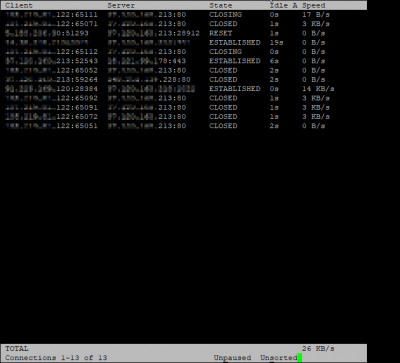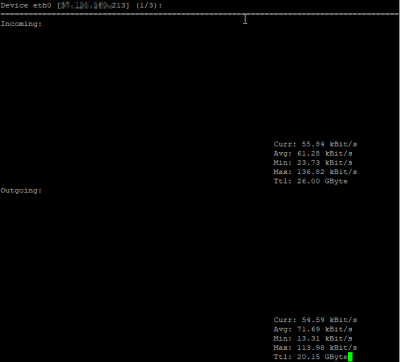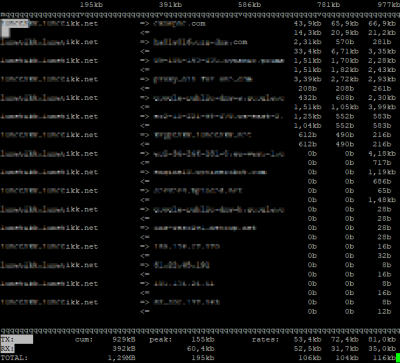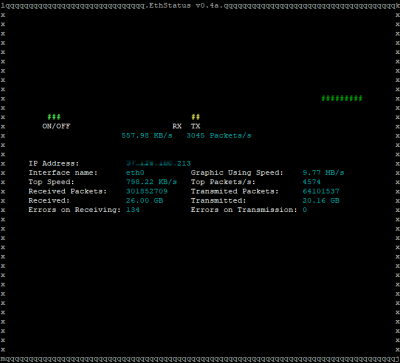Table of Contents
Network
Ports
| Port | Protocol |
|---|---|
| 20 + 21 | FTP |
| 22 | SSH |
| 25 | SMTP |
| 80 | HTTP |
| 111 + 2049 | TCP/UDP - NFS |
| 123 | UDP - NTP |
| 137 + 139 + 445 | TCP/UDP - SMB/Samba |
| 443 | HTTPS |
| 8080 | Proxy |
| 3389 | RDP |
| 3306 | MySQL |
Configuration
Proxy
For your account only edit:
sudo vi /home/<username>/.bashrc
For global proxy edit:
sudo vi /etc/profileadd
export http_proxy=http://10.0.0.1:8080 export https_proxy=https://10.0.0.1:8080
Reload your configuration
source /home/<username>/.bashrc or source /etc/profile
Set proxy for apt
Open apt.conf
vi /etc/apt/apt.conf
Set proxy
Acquire::http::Proxy "http://127.0.0.1:8080"; Acquire::https::Proxy "https://127.0.0.1:8080";
Set proxy for wget
Open wgetrc
vi ~/.wgetrc
Set proxy
use_proxy=on http_proxy=127.0.0.1:8080 https_proxy=127.0.0.1:8080 http_proxy=http://username:password@proxy_host:proxy_port https_proxy=https://username:password@proxy_host:proxy_port
OR
wget <URL> -e use_proxy=on -e http_proxy=127.0.0.1:8080
Change your IP (Ubuntu < 16)
Edit /etc/network/interfaces:
sudo vi /etc/network/interfacesand add
auto eth0
iface eth0 inet static
address 10.0.0.2
netmask 255.0.0.0
network 10.0.0.0
broadcast 10.0.0.255
gateway 10.0.0.1
dns-nameservers 10.0.0.1
Restart your networkinterface
/etc/init.d/networking restart
ifdown eth0 && ifup eth0
Change your IP (Ubuntu > 16)
Edit /etc/netplan/01-netcfg.yaml:
sudo vi /etc/netplan/01-netcfg.yamland add
network:
version: 2
renderer: networkd
ethernets:
ens3:
dhcp4: no
addresses:
- 10.0.0.2/8
gateway4: 10.0.0.1
nameservers:
addresses: [8.8.8.8, 8.8.4.4]
Apply the new IP config
sudo netplan apply
Change your IP (SLES11/12)
Edit /etc/sysconfig/network/ifcfg-eth0:
sudo vi /etc/sysconfig/network/ifcfg-eth0and add
DEVICE='eth0' BOOTPROTO='static' STARTMODE='auto' USERCONTROL='no' BROADCAST='' ETHTOOL_OPTIONS='' IPADDR='10.0.0.2' MTU='' NAME='' NETMASK='255.255.255.0' NETWORK='' REMOTE_IPADDR=''
Edit gateway /etc/sysconfig/network/routes:
sudo vi /etc/sysconfig/network/routesand add
default 10.0.0.1 - eth0 #default 10.0.0.1 - -
Restart your networkinterface
SLES11
/etc/init.d/networking restart
SLES12
ifdown eth0 && ifup eth0
Join a domain and change hostname
Edit /etc/hosts
sudo vi /etc/hostsand add
127.0.0.1 localhost.localdomain localhost 127.0.1.1 ubuntu.lunetikk.de ubuntu 10.0.0.2 ubuntu.lunetikk.de ubuntu
Open /etc/hostname and change the entry to your new hostname (for example: ubuntu)
sudo vi /etc/hostnameSet your hostname
hostname –F /etc/hostname
New syntax to set a hostname
hostnamectl set-hostname "YOURHOSTNAME"Show hostname
hostnamectl
Tools to monitor traffic
Askubuntu - Tools to display traffic
#bmon - shows multiple interfaces at once apt-get install bmon #tcptrack - Tells how much bandwidth is being used and also what protocol (service/port) and destination the transmission is taking place to. Very helpful when you want to know exactly what is using up your bandwidth apt-get install tcptrack #nload - Separated view for down and upload apt-get install nload #iftop apt-get install iftop #ethstatus apt-get install ethstatusbmon:
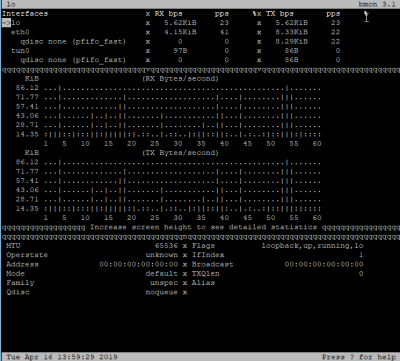
Troubleshooting
resolv.conf is empty
dpkg-reconfigure resolvconf
Cant do ifdown/ifup
# ifdown eth0 && ifup eth0 /etc/resolvconf/update-libc.d/sendmail: 7: .: Can't open /usr/share/sendmail/dynamic run-parts: /etc/resolvconf/update-libc.d/sendmail exited with return code 2 run-parts: /etc/resolvconf/update.d/libc exited with return code 1 /etc/resolvconf/update-libc.d/sendmail: 7: .: Can't open /usr/share/sendmail/dynamic run-parts: /etc/resolvconf/update-libc.d/sendmail exited with return code 2 run-parts: /etc/resolvconf/update.d/libc exited with return code 1 /etc/network/if-up.d/sendmail: 44: .: Can't open /usr/share/sendmail/dynamic run-parts: /etc/network/if-up.d/sendmail exited with return code 2
This should fix it:
apt-get --purge remove sendmail sendmail-base sendmail-bin
